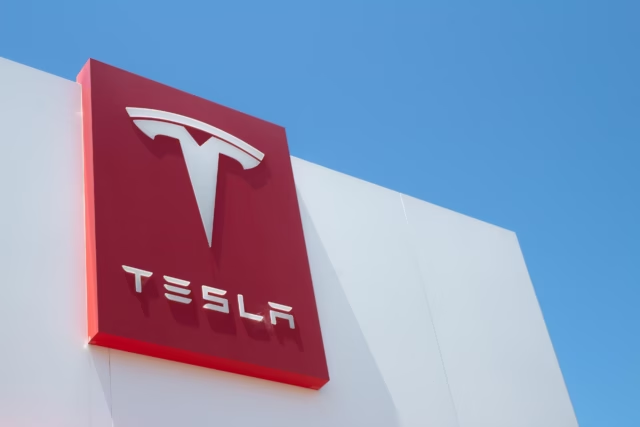
California, the undisputed champion of electric vehicle adoption in the United States, has long been a stronghold for Tesla. The sight of sleek Model 3s and spacious Model Ys gliding along its sun-drenched highways has become commonplace, a symbol of the state’s commitment to a greener future. But a recent report has sent ripples of concern through the automotive world: Tesla registrations in California have taken a significant nosedive, falling by a staggering 15.1% in the first quarter of 2025 compared to the same period last year. This marks the sixth consecutive quarter of decline for the electric car giant in its most crucial domestic market, raising serious questions about the brand’s enduring appeal in this EV-saturated landscape.
While Tesla’s numbers dwindled, the broader Californian auto market painted a contrasting picture. Total new vehicle registrations in the state actually saw an upswing, climbing by a healthy 8.3% during the same January-March period, according to data from Experian Automotive. This stark divergence suggests that while Californians are still eager to embrace new vehicles, their preferences might be shifting away from the once-dominant Tesla.
For years, Tesla enjoyed an almost unchallenged reign in the EV sector, particularly in California, which accounts for a significant chunk of the nation’s electric vehicle sales. In 2022, the company commanded a remarkable 70% share of the state’s EV market. Even as competition intensified, Tesla maintained a strong position, with its market share dipping to 60% in 2023. However, the latest figures reveal a more dramatic shift. Tesla’s slice of the Californian EV pie has shrunk considerably, plummeting to just 43.9% in the first quarter of 2025, down from 55.5% in the corresponding period last year. This dip below the 50% threshold is a significant milestone, indicating a notable erosion of Tesla’s dominance in this key market.
The Model Y, Tesla’s popular crossover SUV and previously the best-selling EV in California, has also experienced a substantial downturn. Sales of the Model Y plummeted by approximately 30% in the first quarter of this year compared to the year before. This decline in the sales of a flagship model underscores the challenges Tesla is currently facing in maintaining its grip on the Californian market.
So, what’s fueling this unexpected slump in Tesla registrations in a state so deeply invested in electric mobility? Several factors appear to be at play, according to industry analysts and reports. One prominent reason cited by the California New Car Dealers Association (CNCDA) is Tesla’s “aging product lineup.” While other automakers are rolling out fresh and compelling electric models, Tesla’s core offerings, the Model 3 and Model Y, have remained largely unchanged for several years. In a rapidly evolving market where new technologies and designs are constantly emerging, this lack of significant updates might be contributing to consumer fatigue and a desire to explore newer alternatives.
Another significant factor weighing on Tesla’s popularity in California appears to be the growing “backlash against CEO Elon Musk’s political initiatives.” Musk’s increasingly prominent and often controversial involvement in political discourse, particularly his role within the Trump administration’s Department of Government Efficiency (DOGE), has seemingly alienated a segment of California’s predominantly liberal and environmentally conscious consumer base. Reports indicate that widespread protests have erupted at Tesla stores across the state, fueled by discontent over Musk’s policy decisions, including federal workforce reductions and the cancellation of contracts supporting global humanitarian programs. This negative sentiment surrounding the brand’s leader is undoubtedly impacting consumer perception and purchase decisions in a politically engaged state like California.
Furthermore, the anticipation surrounding the refreshed version of the Model Y is also likely contributing to the registration slowdown. Tesla had announced earlier this year that retooling production lines at four of its factories to accommodate the updated Model Y resulted in several weeks of lost production during the first quarter. This production pause naturally translated to fewer vehicles available for registration. Additionally, analysts suggest that some potential buyers might be holding off on purchasing the current Model Y, opting instead to wait for the anticipated cheaper versions of the redesigned crossover. This “wait-and-see” approach could be temporarily suppressing registration numbers.
Interestingly, while Tesla’s registrations declined, the overall market for battery-powered cars in California continued to grow, albeit at a slower pace than previous years. Total EV sales in the state rose by 7.3%, indicating that consumers are still embracing electric vehicles, but they are increasingly choosing brands other than Tesla. Notably, General Motors (GM) experienced a significant 62% jump in registrations for its Chevrolet-branded EVs, while Hyundai and Honda also saw gains, with Honda’s new Prologue emerging as the third best-selling EV in the state, trailing only Tesla’s Model Y and 3. This suggests that competition in the EV market is intensifying, and other automakers are successfully capturing the attention and wallets of Californian consumers.
The recent slump in Tesla’s registrations in California serves as a stark reminder that even in a seemingly unshakeable market, dominance is not guaranteed. The confluence of an aging product lineup, CEO-related brand perception challenges, and increasing competition is creating headwinds for the once-unstoppable electric vehicle pioneer in its most crucial domestic territory. While the upcoming refreshed Model Y might provide a much-needed boost, Tesla will need to carefully navigate these challenges to regain its former glory and market share in the Golden State’s dynamic and ever-evolving electric vehicle landscape. The question remains: can Tesla reignite its Californian dream, or will other contenders continue to chip away at its once-formidable lead in this pivotal EV market?










